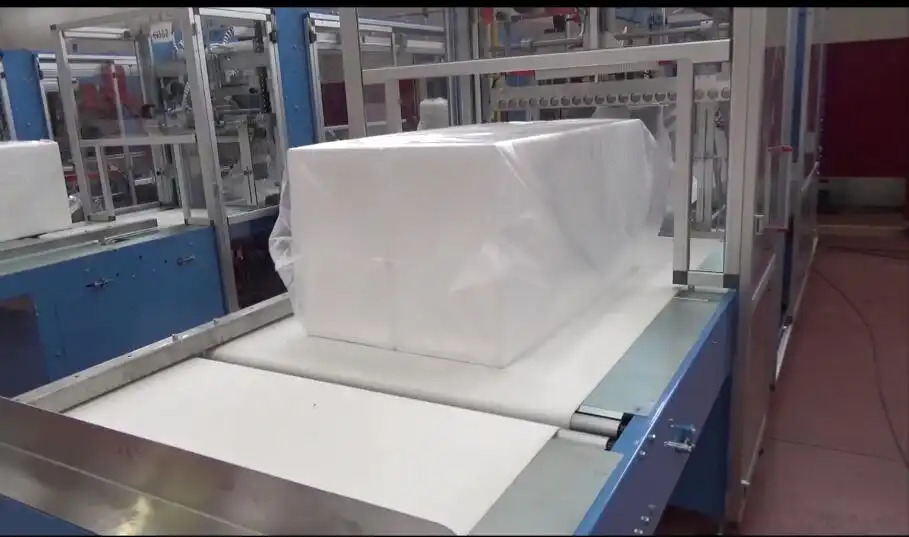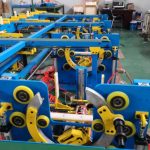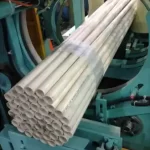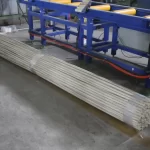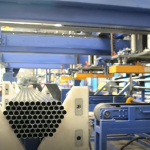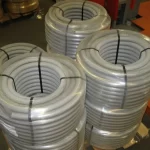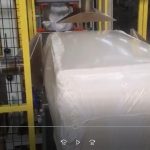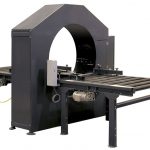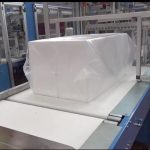The automatic strapping machine and bundle making machine is designed to pack the panel, profile with PET strip. Timber adding is optional.
Cost vs. Benefit: Making a Strong Case for Automating Your Board Bundle Packing Process
In the ever-evolving manufacturing landscape, efficiency and cost-effectiveness are key. Automating the board bundle packing process offers significant advantages. This article explores the costs and benefits of automation, providing a comprehensive analysis to help you make an informed decision.
Understanding the Board Bundle Packing Process
Packing board bundles manually is labor-intensive and time-consuming. Automation streamlines this process, reducing human error and increasing productivity. Let’s explore how automation transforms packing operations.
The Initial Costs of Automation
Equipment Investment
Automating your packing process requires an upfront investment in machinery. These machines are designed to handle various board sizes and types, ensuring flexibility and efficiency.
Installation and Training
Installation involves integrating new systems into existing workflows. Training staff to operate these machines is crucial for maximizing their potential and ensuring a smooth transition.
Maintenance and Upkeep
Automated systems require regular maintenance to ensure optimal performance. While this adds to initial costs, it is essential for longevity and efficiency.
Benefits of Automating the Packing Process
Increased Productivity
Automated systems significantly increase productivity by speeding up the packing process. Machines can operate continuously, handling larger volumes than manual labor ever could.
Labor Cost Reduction
By reducing the need for manual intervention, automation lowers labor costs. Employees can be reassigned to more strategic roles, enhancing overall operational efficiency.
Improved Accuracy and Consistency
Automation ensures consistent packing quality. Unlike manual processes, machines provide uniformity, reducing errors and ensuring every bundle is packed to the same standard.
Enhanced Safety and Reduced Injury Risk
Minimizing Manual Handling
Automation reduces the need for manual lifting and handling, lowering the risk of workplace injuries. This not only protects employees but also reduces compensation claims and insurance premiums.
Safer Work Environment
Automated systems are designed with safety features that prevent accidents, creating a safer work environment and promoting employee well-being.
Long-Term Cost Savings
Material Efficiency
Automated packing machines optimize material usage, minimizing waste. By using precisely the amount of packaging needed, businesses can significantly reduce material costs.
Energy Efficiency
Modern machines are engineered for energy efficiency, decreasing overall energy consumption and lowering utility bills.
Integration with Smart Technology
Real-Time Monitoring
Smart technology enables real-time monitoring of the packing process. This provides valuable insights into performance and potential issues, allowing for proactive management.
Predictive Maintenance
With IoT integration, machines can predict maintenance needs, reducing downtime and ensuring continuous operation.
Environmental Impact
Sustainable Practices
Automating the packing process supports sustainability goals by reducing waste and energy usage. This aligns with green initiatives and enhances a company’s environmental reputation.
Reduced Carbon Footprint
Energy-efficient machines contribute to a lower carbon footprint, supporting global efforts to combat climate change.
Challenges and Considerations
Initial Financial Outlay
While automation offers long-term savings, the initial investment can be significant. Businesses need to carefully assess their budgets and financial strategies.
Adapting to Change
Transitioning to automated systems requires a cultural shift within the organization. Employees may need time to adapt to new technologies and workflows.
Keeping Up with Technological Advances
Staying ahead in automation means continuously updating systems. Businesses must be prepared to invest in ongoing improvements to maintain competitive advantages.
Real-World Success Stories
Case Study: Manufacturing Efficiency
A leading manufacturer implemented automated packing systems, resulting in a 30% increase in productivity and a 20% reduction in labor costs. This transformation allowed the company to meet growing demand without increasing headcount.
Case Study: Logistics Optimization
A logistics company automated its packing process, significantly reducing errors and improving delivery times. The investment paid off within two years, showcasing the financial and operational benefits of automation.
Future Trends in Packing Automation
AI and Machine Learning
The integration of AI and machine learning in packing systems promises even greater efficiency and adaptability. These technologies enable machines to learn from data, optimizing processes in real-time.
Enhanced Customization
Future packing systems will offer greater customization, allowing businesses to tailor processes to specific needs and customer preferences.
Conclusion
In conclusion, automating the board bundle packing process presents a compelling case for businesses seeking to enhance efficiency, reduce costs, and improve safety. While the initial investment may be substantial, the long-term benefits far outweigh the costs. By embracing automation, companies not only improve their bottom line but also position themselves for future growth and sustainability. Investing in technology is not just about keeping up with the competition—it’s about leading the way to a more efficient and prosperous future.
